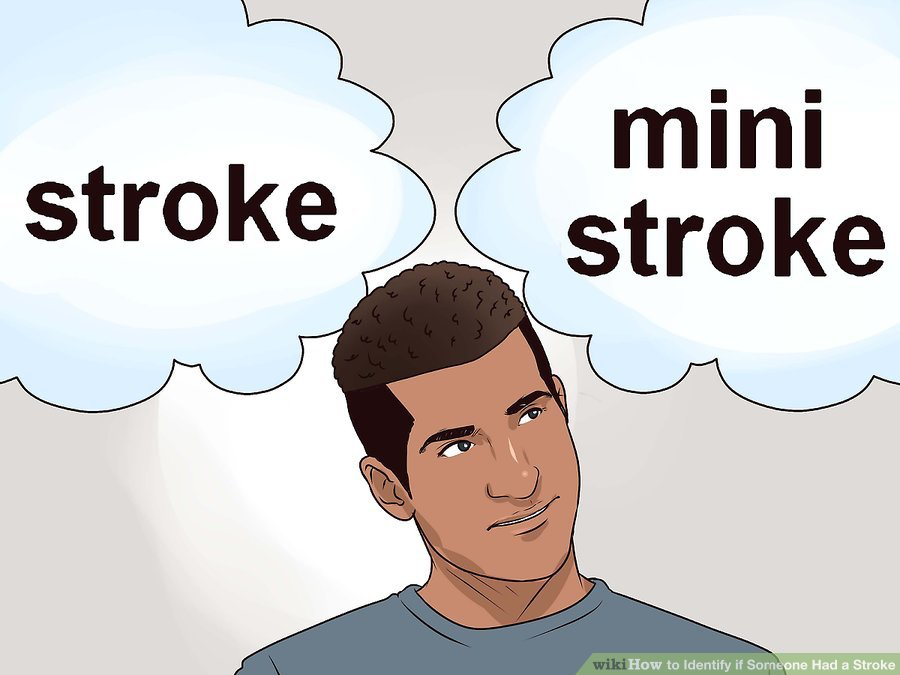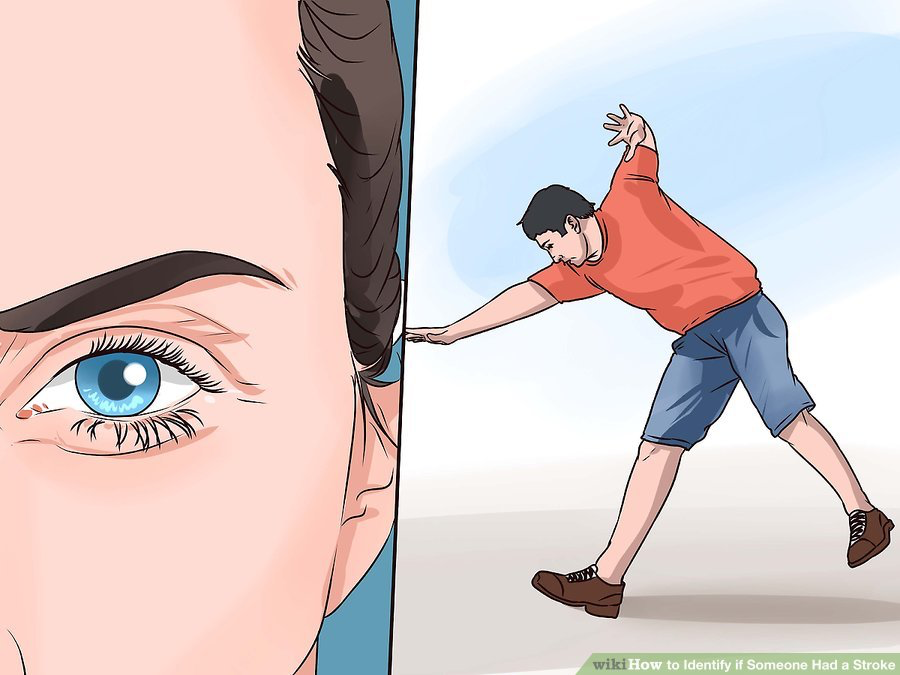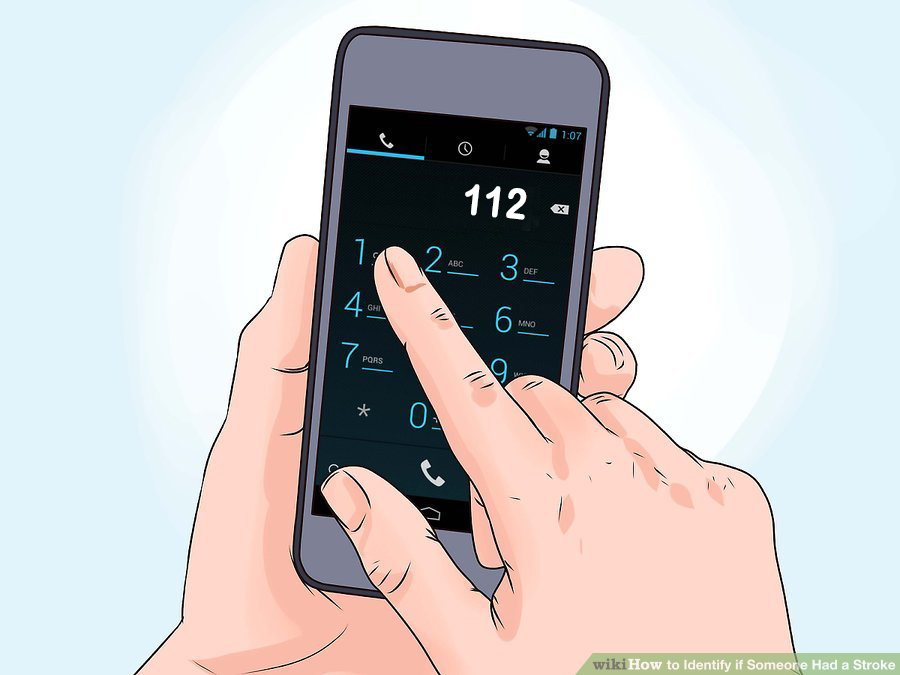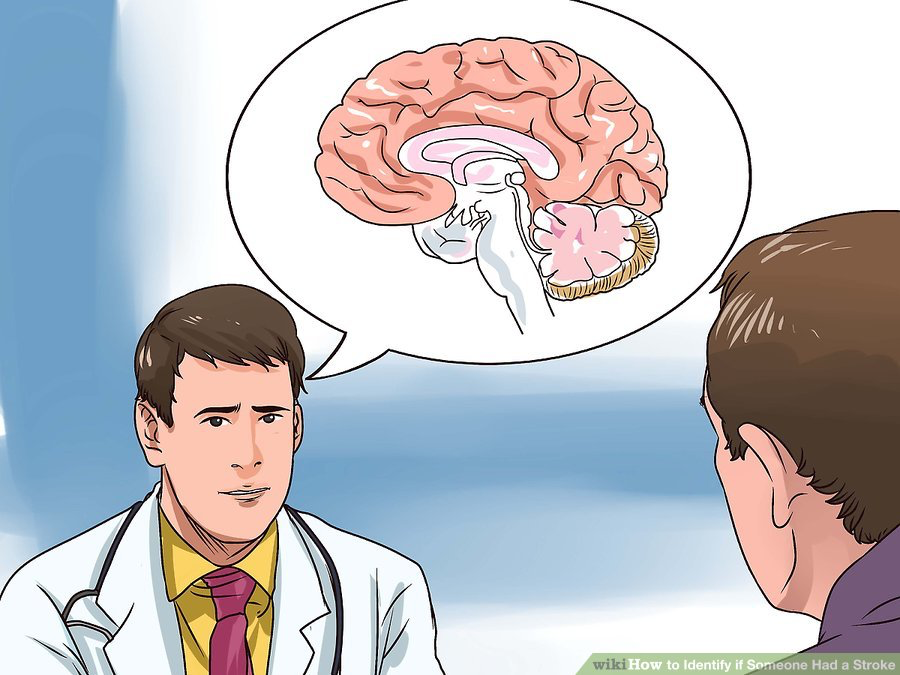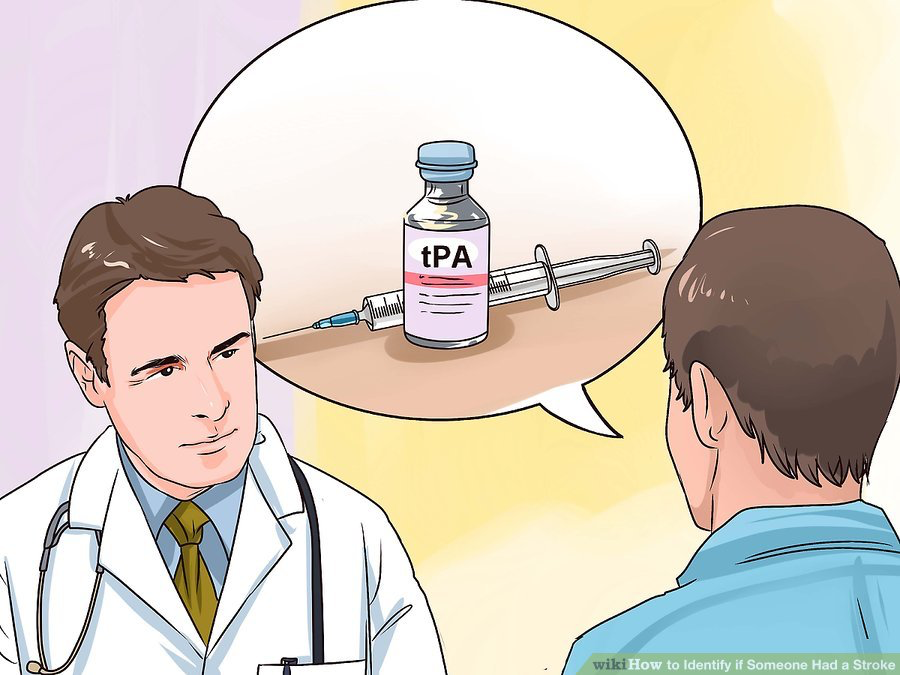First Aid Explained
Disclaimer:
This website is intended to assist with patient education and should not be used as a diagnostic, treatment or prescription service, forum or platform. Always consult your own healthcare practitioner for a more personalised and detailed opinion
How to Identify if Someone Had a Stroke
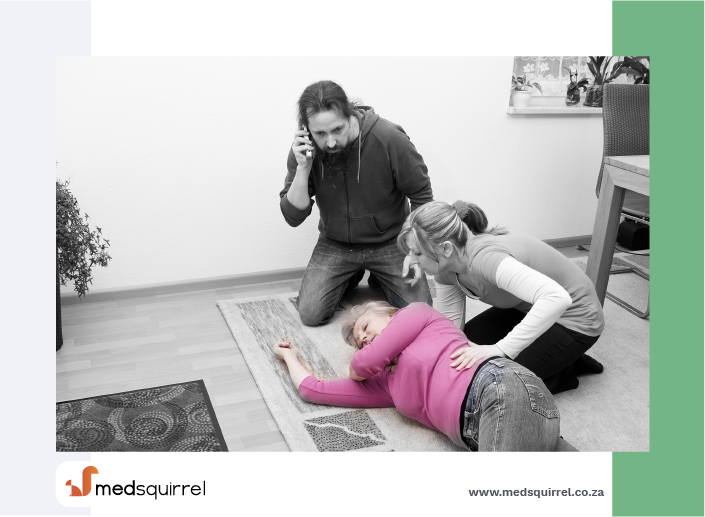
We have selected the following expert medical opinion based on its clarity, reliability and accuracy. Credits: Sourced from the website wikiHow. Please refer to your own medical practitioner for a final perspective, assessment or evaluation.
Overview
A stroke occurs when blood flow to your brain is interrupted, causing your brain cells to shut down, as they do not have the necessary oxygen and nutrients to function. Strokes are the third leading cause of death in the US and the UK and result in 10% of deaths worldwide. It is important that you know how to recognize the signs of a stroke, especially if someone you know is at risk of having a stroke. Treatment is available to minimize the damage caused by stroke, but the person must be taken to a hospital within one hour of the appearance of the symptoms.
Part 1: Recognizing the Symptoms of a Stroke
1. Understand the difference between a stroke and a mini-stroke
There are two major types of strokes: an ischemic stroke, which is caused by a blood clot in your brain, and a hemorrhagic stroke, caused by a blood vessel in your brain that breaks and bleeds into the brain. Hemorrhagic strokes are rarer than ischemic strokes, as only about 20 percent of strokes are hemorrhagic. Both types of strokes are serious and can be life threatening if the person is not treated as soon as possible.
- Mini-strokes, also called transient ischemic attacks (TIA), occur when your brain gets less blood than normal. They can last from a few minutes up to a day. Many people who experience mini-strokes do not even realize they have had a stroke, but mini-strokes can be a warning sign of a full stroke. If someone experiences a mini-stroke, they should receive medical attention right away.
2. Look for two or more symptoms of a stroke
- Sudden numbness or weakness of the face, arm, or leg on one side of their body.
- Sudden difficulty seeing out of one or both eyes.
- Sudden difficulty walking, as well as dizziness and loss of balance.
- Sudden confusion and difficulty talking or understanding someone talking to them.
- Sudden bad headache with no clear cause.
3. Do the F.A.S.T test
It can be difficult for someone suffering from a stroke to describe or explain their symptoms. To confirm the person is having a stroke, you can do a quick test, called the F.A.S.T. test:
- Face - Ask the person to smile. Check if one side of their face droops or appears numb. Their smile may appear uneven or lopsided on one side of their face.
- Arms - Ask the person to raise both arms. If they cannot lift their arms, or if one arm drifts downward, they are likely suffering from a stroke.
- Speech - Ask the person a simple question, like their name or their age. Note if their words are slurred when they respond to you or if they have difficulty forming words.
- Time - If the person displays any of these symptoms, it is time to call 10177 (see "EMERGENCY NUMBERS" above). You should also check the time to confirm when the person's symptoms first appeared, as the medical staff will use this information to better care for the person.
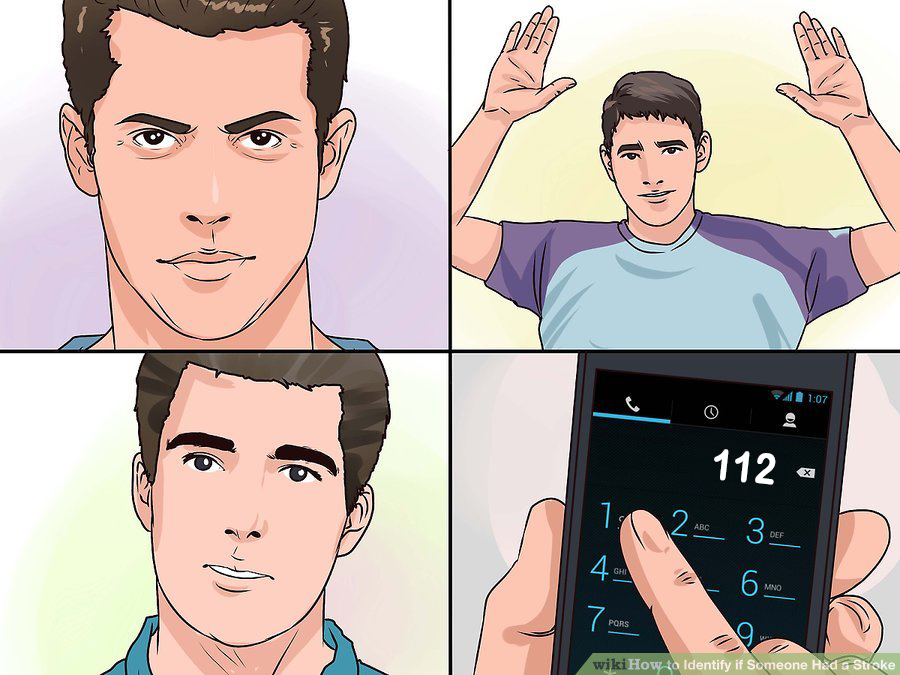
Part 2: Getting Medical Attention for the Stroke Victim
1. Call emergency services for medical help as soon as possible
(See "EMERGENCY NUMBERS" above)
Once you confirm the person is having a stroke, you need to take immediate action and call emergency services.
You should then tell the dispatcher that the person is having a stroke and requires immediate medical attention. A stroke is considered a medical emergency, as the longer blood flow is cut off to the brain, the greater the damage to the brain.
2. Allow the doctor to do tests and a check up
Once you get the stroke victim to a hospital, the doctor will ask the person questions, such as what happened and when they first started experiencing symptoms. These questions will help the doctor determine if the person is thinking clearly and how severe the stroke is.
The doctor will also test the person's reflexes and order several test, including:
- Imaging tests: These tests will provide a clear picture of the person's brain, including CT scans and MRI scanning. They will help the doctor determine if the stroke was caused by a blockage or by bleeding in the brain.
- Electrical tests: You will probably be given an EEG (electroencephalogram) to record the electrical impulses and the sensory processes of the brain, and an EKG (electrocardiogram) to measure the electrical activity of the heart.
- Blood flow tests: These tests will show any changes to blood flow to the brain that may be occurring.
3. Discuss treatment options with the doctor
Some strokes can be treated with a drug called tPA, which dissolves blood clots that are obstructing blood flow to the brain. However, the window of opportunity for treatment is three hours, and the treatment has specific guidelines for its application. It is essential that the person get to a hospital within 60 minutes of the stroke to be evaluated and receive this treatment.
- A recent study by the National Institute of Neurological Disorders and Strokes (NINDS) found that some stroke patients who received tPA within three hours of the beginning of their stroke symptoms were 30 percent more likely to recover with little to no disability after three months.
- If the person cannot have tPA, the doctor may prescribe an antiplatelet medicine or a blood thinner for a TIA, or mini-stroke.
- If the person has had a hemorrhagic stroke, the doctor may prescribe medication to lower their blood pressure. She may also take the person off any antiplatelet medications or blood thinners.
- Surgery is a treatment option in some cases.
_______________________________________________________________________________________________________________________
Are you a healthcare practitioner who enjoys patient education, interaction and communication?
If so, we invite you to criticise, contribute to or help improve our content. We find that many practicing doctors who regularly communicate with patients develop novel and often highly effective ways to convey complex medical information in a simplified, accurate and compassionate manner.
MedSquirrel is a shared knowledge, collective intelligence digital platform developed to share medical expertise between doctors and patients. We support collaboration, as opposed to competition, between all members of the healthcare profession and are striving towards the provision of peer reviewed, accurate and simplified medical information to patients. Please share your unique communication style, experience and insights with a wider audience of patients, as well as your colleagues, by contributing to our digital platform.
Your contribution will be credited to you and your name, practice and field of interest will be made visible to the world. (Contact us via the orange feed-back button on the right).
